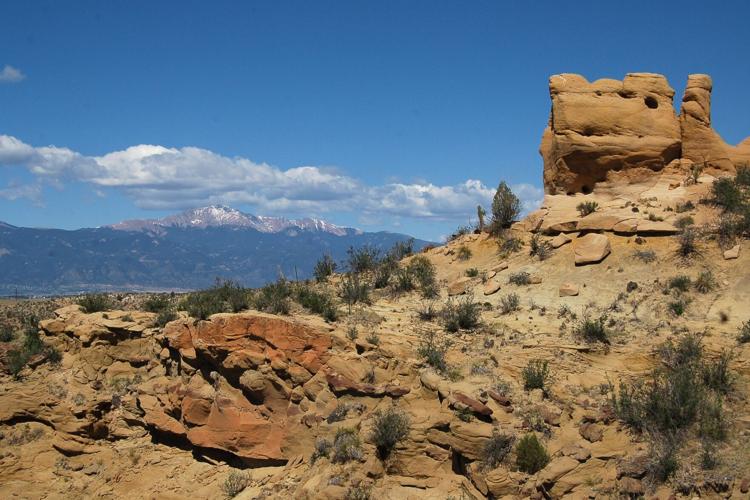
Visitors to Colorado Springs can now explore ancient geological features and fossils through guided tours at Corral Bluffs, a site rich in history and scientific significance. Led by city park ranger Mike Bowman, these tours are part of a new initiative aimed at showcasing the area’s unique ecological and paleontological heritage.
Corral Bluffs spans over 700 acres and is home to the K-T Boundary, a critical geological layer marking the end of the dinosaurs approximately 66 million years ago. As Bowman leads groups along a rugged corridor filled with canyons and hoodoos, he points out remnants of a once-tropical environment, including fossilized palm wood and remains of early mammals like Loxolophus, a raccoon-sized creature that once roamed these lands.
The tours are available on Fridays and Saturdays and can be registered for online via the city’s website. This initiative complements the ongoing efforts by the Corral Bluffs Alliance and volunteer guide Paula Watkins, who has long been an advocate for public access to this hidden gem. “It’s great,” Watkins remarked, reflecting on the increasing awareness of the site’s significance. “I never had a hike where somebody didn’t say, ‘Oh, my gosh, I never knew we had this gem right outside city limits.’”
Located east of Colorado Springs, Corral Bluffs is often viewed as a counterpart to the more famous Garden of the Gods on the opposite side of the city. Matt Mayberry, the city’s cultural services manager, emphasized the importance of Corral Bluffs within the park system. “Garden of the Gods is our truly unique treasure on the west side, and this is similar on the east side,” he stated.
Historically, the area has been gated since the city acquired the land in 2008 through the sales tax-funded Trails, Open Space and Parks program. This acquisition was met with relief from advocates who feared the land would be developed into a dirt bike park. “There was a strong belief that discoveries were going to happen,” Mayberry noted, highlighting the site’s potential for scientific exploration.
The significance of Corral Bluffs came to the forefront on September 10, 2016, when paleontologist Tyler Lyson of the Denver Museum of Nature and Science discovered a skull of the pig-like carsioptychus. This remarkable find was part of a series of fossil discoveries that have attracted attention from the scientific community. Further studies revealed other significant mammals from the site, including the eoconodon, comparable in size to a wolf, and Militocodon lydae, which resembles a chinchilla.
As Bowman conducts the tours, he emphasizes the ongoing potential for new discoveries. “That’s in the last two weeks,” he says, pointing to a recent rockfall. “With more inspection, it’s easy to imagine more fossils meeting daylight.”
While the tours provide a glimpse into the area’s rich past, the future of public access to Corral Bluffs remains uncertain. City Parks Director Britt Haley acknowledged the challenges of developing a master plan for broader access. “Economic circumstances have not allowed that,” she explained, but she reassured the community that the city is committed to responsible management of the area.
In conjunction with Corral Bluffs, efforts are underway to connect this site with the nearby Jimmy Camp Creek Park, an area with evidence of human activity dating back over 3,500 years. Mayberry believes that when viewed together, these locations represent a unique landscape for scientific research comparable to areas found in the Four Corners region.
While plans for housing and business developments loom in the vicinity, advocates remain concerned about preserving the integrity of this significant archaeological landscape. The Norwood Development Group has plans for an expanded Banning Lewis Ranch, and company representatives have expressed a commitment to responsible stewardship of the land.
Despite the potential for increased development, advocates like Watkins are apprehensive. “I’ve had a pit in my stomach,” she confessed, voicing concerns about the impact of more residents on this delicate environment.
Bowman hopes that the guided tours will inspire a sense of pride and awareness among visitors. “Very much like when you go to Garden of the Gods and say to yourself, ‘I can’t believe the city of Colorado Springs has a city park of this level, it’s almost like a national park,’ I want people to do that with Corral Bluffs,” he said. The tours not only offer a window into the past but also emphasize the importance of preserving these natural treasures for future generations.






